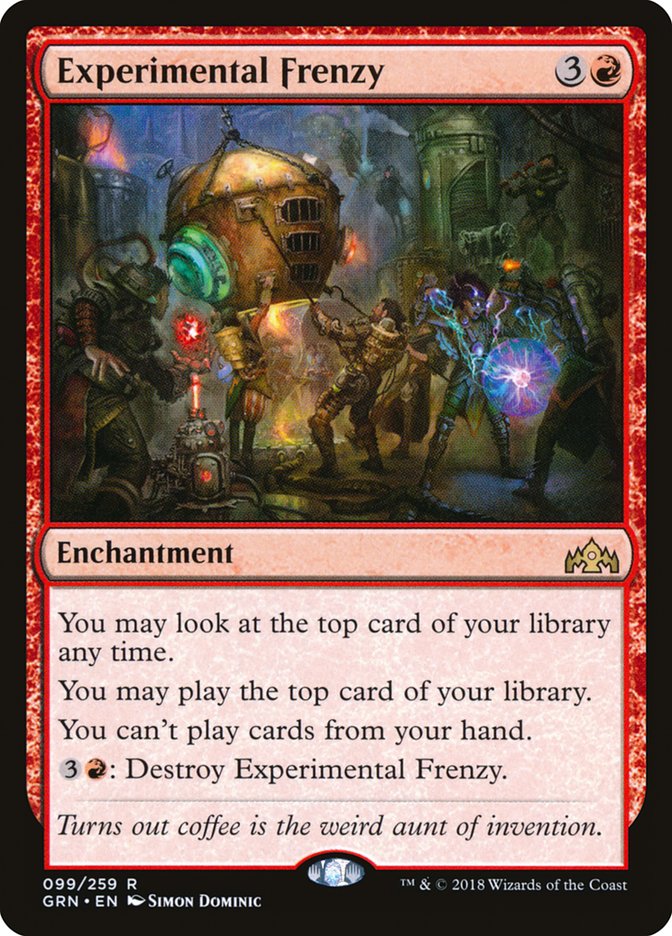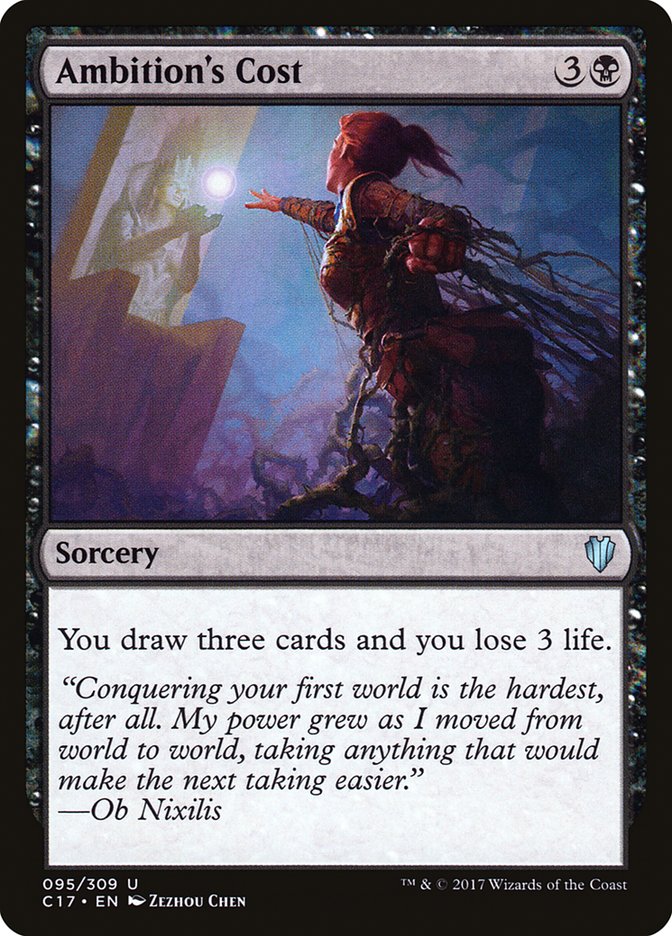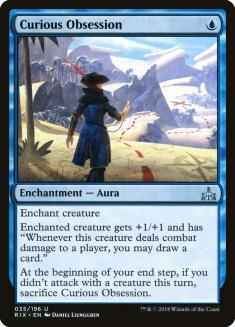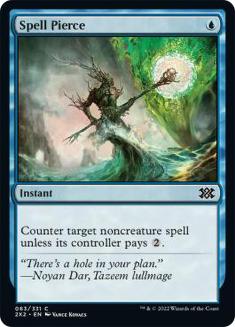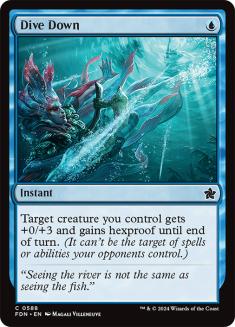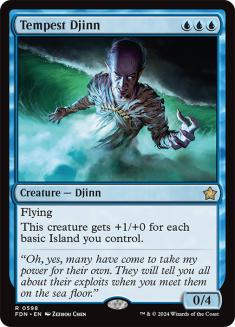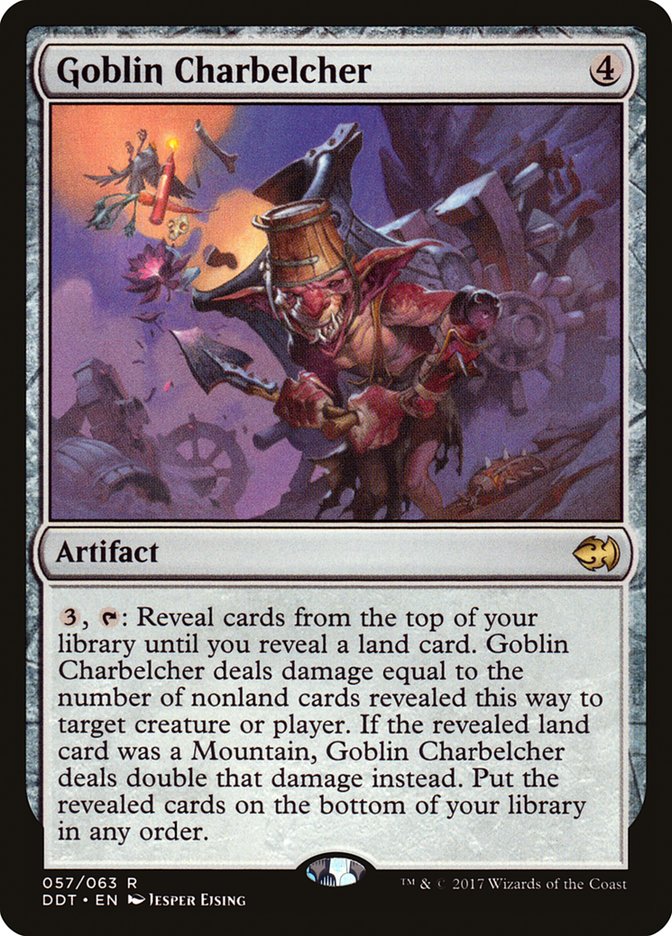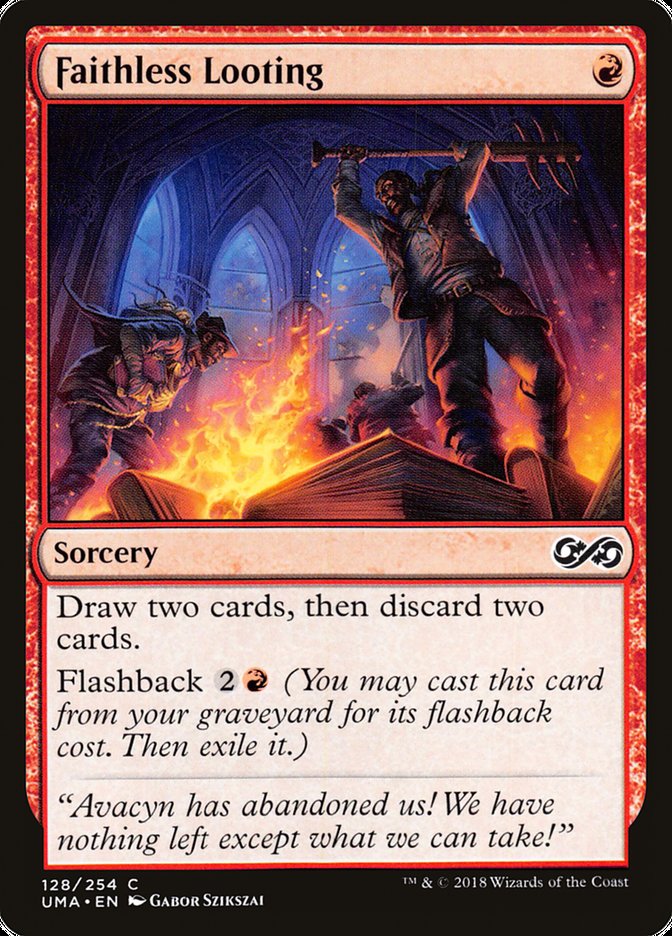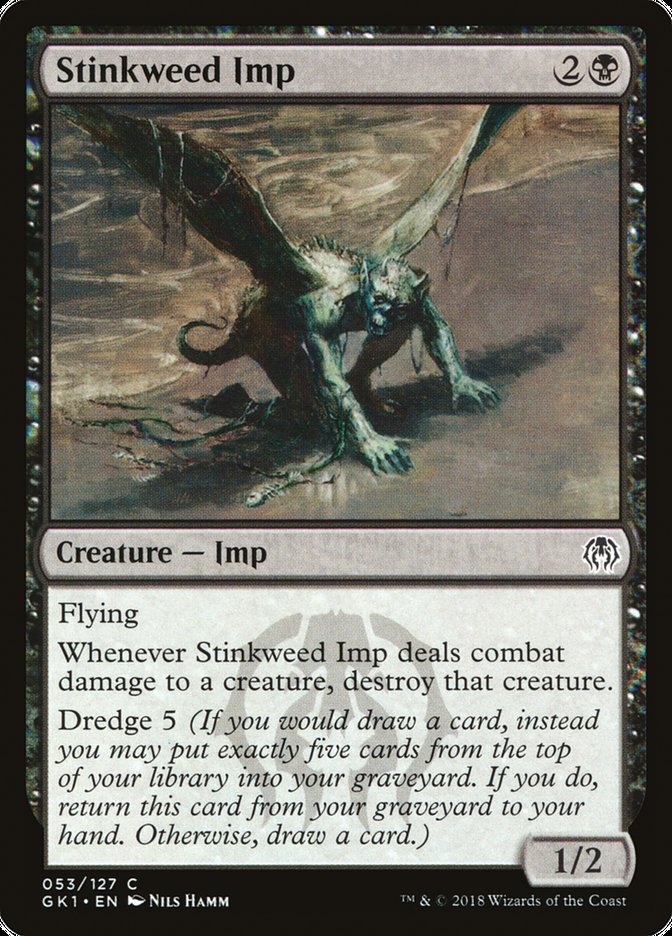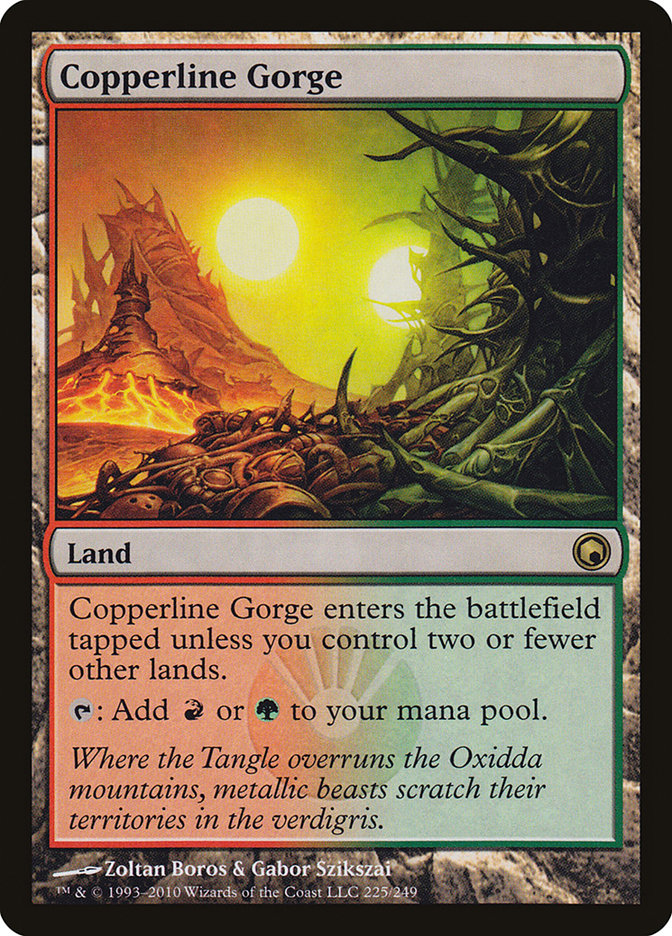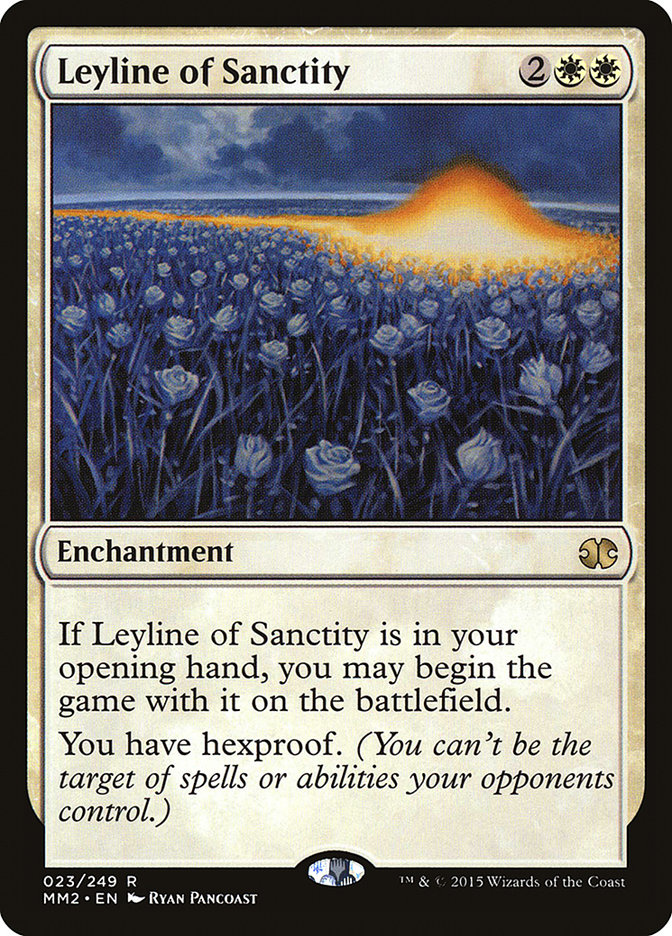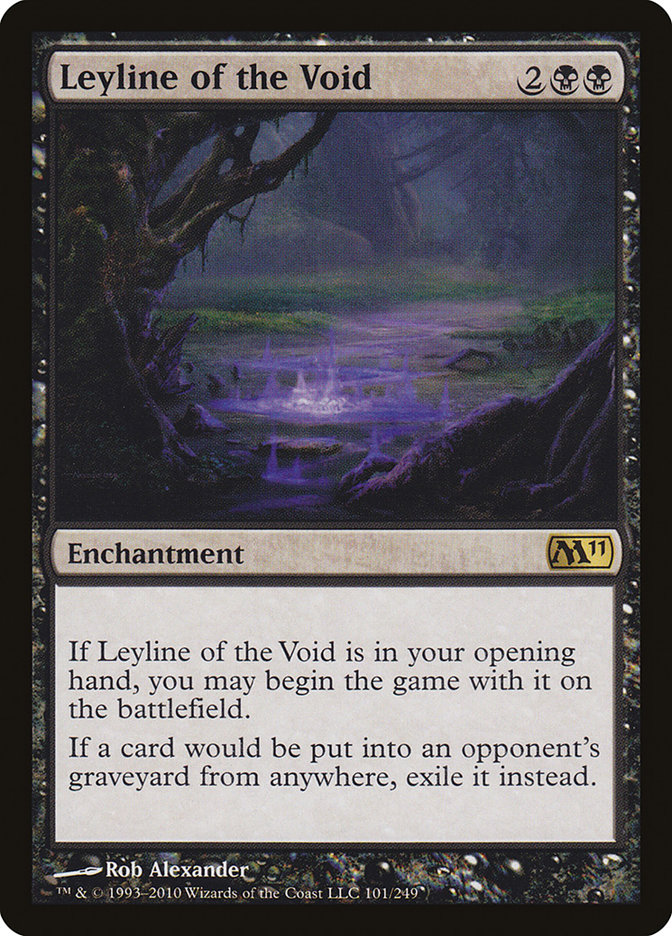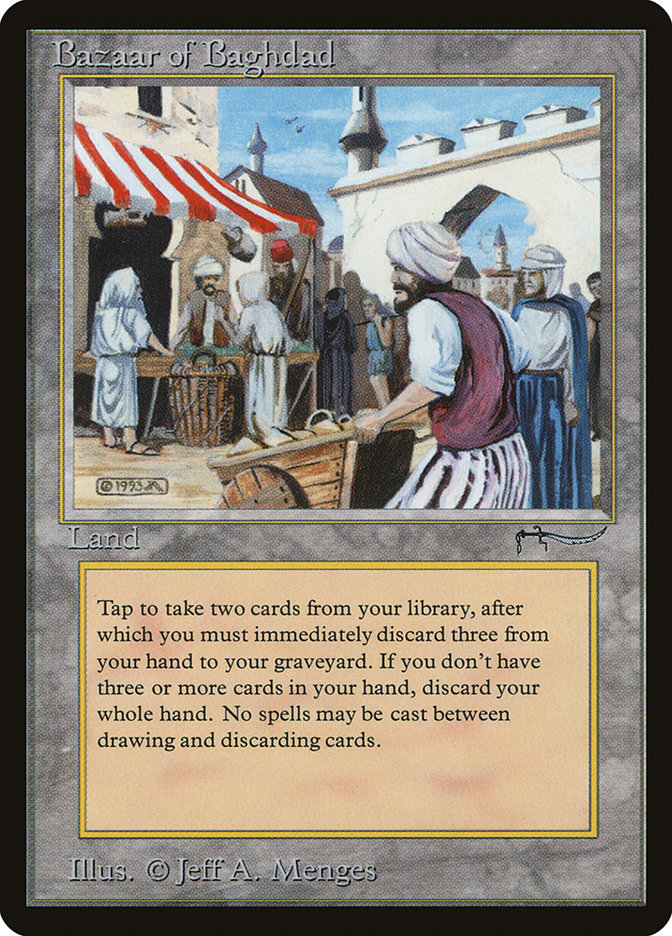Magic’s mulligan system has always occupied a weird place in the game system – an effort to ameliorate how frequently “normal” hands lead to non-functional openings for at least one player, without stripping an unhealthy amount of variance out altogether. Clearly, some sort of system is necessary. Even if people play with an appropriate amount of mana, the fail rate on opening hands is too high, and the way that they fail (one player literally plays nothing sometimes) is too unsatisfying.
In the last few years, Magic has moved to make the traditional mulligan less punitive with the “Vancouver Mulligan” (if you mulligan one or more times, you may scry before the game starts.) One can argue if certain cards or strategies become more or less powerful in that world (probably a net positive for decks that mulligan more often), but the impact on that front is barely perceptible. I’ve never heard of a player choosing a different deck or sideboard strategy because of the Vancouver Mulligan, and I think it’s reasonable to conclude that everyone engages with that mulligan system on more or less equal footing. I would describe it as a tweak to the previous rule, not a new rule altogether.
A new mulligan system, announced yesterday and to be tested at the Mythic Championship in London, is a new rule altogether. Replacing the previous system of going down a card each time one mulligans, now players will redraw to seven with each iteration and then choose a number of cards equal to their number of mulligans once they’ve found a hand they wish to keep. The format there is Modern, so Wizards of the Coast has wisely selected a format where decks and mulligan decisions are more extreme to stress-test this new rules set.
The first question that popped into my mind: Why try this?
I can think of three reasons. The first one is the obvious one – Magic’s design team may still feel that, even with the Vancouver Mulligan, mulligans are too punishing, and more extreme measures are necessary. I question the efficacy of this system towards that end (more on that later), but it’s possible that this desire, and nothing more, compelled them to at least try this out.
Second, the proposed system vastly increases the feeling of player agency, even if it doesn’t do much to impact win rate. The Vancouver Mulligan is a step in this direction – even if I mulligan, don’t do very much, and lose, I made a decision that mattered, and maybe I could have made a different one to change the outcome. Looking at seven cards and sculpting your best five-card hand out of it is an even greater feeling of control when you’ve caught the downside of variance, and can make that negative experience feel more like a strategic moment and less like a random punishment.
Third, Arena informs (or should inform) everything. It’s known by players of every ability level that some games of Magic, you don’t get to play. If you love Magic, it can still be frustrating, but it’s easy to compartmentalize as “the cost of doing business,” and it’s not like it’s the most regular occurrence. For ease of argument let’s call it 1% of the time, though maybe it’s higher or lower.
Magic is pouring an unprecedented amount of money into Organized Play and marketing, and I’m sure they have great ambitions about showing Magic off to a new and large generation of potential players. In that climate, I’m not sure it is politically viable to risk having the finals of a million-dollar event end with one player taking no game actions, even if those odds are 1%. There could have been a need for a mulligan system designed to ensure, as much as is reasonably possible, that everyone plays at least a few lands and a spell or two, even if the mulligans still doom that player.
So, what are the practical differences of this mulligan rule? In the case of mulligans to six, there are two key differences:
1. Often, there’s a card in your hand that is less desirable than whatever you’re considering to scry to the top or bottom. You now rid yourself of that card.
2. You have information about and access to the top card of your deck before deciding if you want to mulligan again.
The first reason should improve your hands over time compared to the previous system, and the second reason should reduce the frequency of mulligans to five or fewer cards. Both of these reasons scale up in impact as you mulligan more – even when you mulligan to five, you look at and get access to the seventh card in your deck, which was invisible and unobtainable to you before.
When it comes to low-power formats (Sealed, Draft, most Standard formats), I think the change will be largely cosmetic. These games are typically played over a slower timeline, and rarely does one card or interaction recoup a bunch of lost cards. It’s also rare to have a “dead” card in your opening hand, especially once you’ve gone down to six – typically, it’s all mana, some stuff to do early, and some stuff to play towards. In short, while it’s better to loot with seven than to scry with six, I don’t think it makes a vast difference over time.
You also get more-informed mulligans. For example, you go to six, and you’re looking at:
That looks like another mulligan to me. But what if your top card was Mist-Cloaked Herald? Now that’s part of your seven-card hand, you put something on the bottom, and you’re off to the races.
I specifically chose a spell for that example because I don’t think “missing a land” is going to appreciably change mulligan frequency – it is already common to keep six-card hands that need a land to get off the ground and bank on the scry to get you there. Missing a key, cheap spell (Mist-Cloaked Herald in the previous example, Search for Azcanta, etc.) will be where the difference emerges.
But it is rare in Standard (and almost impossible in Draft) for knowledge about and access to your seventh card on the first turn to keep hands that one would otherwise mulligan again.
Your five-card hands get much, much better under the proposed system – you have access to your seventh card, with which you get to sculpt the best five-card hand possible. But winning with five cards in Draft or Standard is really hard, even if you choose the five you start with. A great increase in agency and “playable” hands, sure. A major change in win rate for the player who mulligans more often? I’m skeptical.
The incentives get pretty wild once you start looking at Modern, Legacy, and Vintage, formats with cards and interactions so powerful that it is worth taking a bunch of mulligans to find them. The biggest beneficiaries are combo decks that focus on putting together a specific set of cards, rather than a critical mass of stuff. I think decks like Burn and Storm get appreciably better mulligans in the new world than Jund, but for decks like Dredge, Sneak and Show, and the like, I believe the mulligan system is advantageous to a degree that it should impact the frequency with which those decks show up in a tournament setting.
Modern Dredge is a great example. The deck doesn’t really care about card economy in a traditional sense –Dredge will happily mulligan to four or five cards if it can find, say, Faithless Looting, a card with dredge, and red mana. They are going to have that mixture of cards so much more often now, and will also have access to Looting (or whatever the enabler is) on the first turn rather than on the second when it’s been scryed to the top.
Whatever you think your win rate was against Dredge in the old system, throw that out the window and start over. That win rate was subsidized by a relatively high fail rate. You won some Game 1s without any graveyard interaction because you had a Path to Exile and a Snapcaster Mage, and their draw wasn’t great. Those games are virtually gone now.
There’s an intuition to say that, even if decks like Dredge get the better of it Game 1, it should cut the other way after sideboarding, since you can more reliably find your sideboard cards. There is some truth to that, but I think it is largely overstated.
If you know you have a card that your opponent is 100% beat by (Leyline of Sanctity and they can only win with Tendrils of Agony, or whatever), the new system is a huge boon. If you have something merely good-to-great (Leyline of the Void against a Dredge player with some blend of Nature’s Claims and/or Assassin’s Trophy), the math gets a lot more suspect, and you rarely know for sure when you’re in the first scenario rather than the second.
If you are willing to go down to one to find Leyline of Sanctity against your Tendrils opponent, you get many more bites at the apple under the proposed system, since you’re looking at seven cards each time, rather than six, five, and so on. That sounds great. But what about the second example, which is the vastly more common one?
Let’s say you have a heuristic of “I will go down to five cards, no questions asked, looking for Leyline of the Void, and after that I need to be judicious.” You get a few more bites (an extra card on six, two extra cards on five), but it doesn’t do a lot to change the math about having a Leyline of the Void, and this is all happening against a backdrop of your Dredge player having substantially better draws in all games, both pre-sideboard and post-.
In short, it comes down to the value of the extra card you’re looking at. If you are on the hunt for only Leyline of the Void, looking at an extra card isn’t worth very much; you only have so many Leylines. For the Dredge player who just needs, say, red mana, or any card with “dredge” on it, or any discard outlet, to turn a otherwise-mulligan into a fantastic hand, the extra looks are much higher-leverage.
On a related note, the proposed rules change seems fundamentally incompatible with an unrestricted Bazaar of Baghdad.
To summarize, this is my trepidation with the new mulligan system: though I think it does a good job of providing a sense of agency and ensuring that games in which one player does literally nothing should become a lot more rare, it is a massive boost for decks that are already exploitative of the present mulligan system, and as such feels more like a fundamental shift in the game’s incentive structures than a strategically-agnostic tweak to previous rules.
Maybe the second thing doesn’t matter all that much. Maybe you just ban Faithless Looting in Modern (not hard to make that case regardless). Legacy is a pretty durable format even when combo is better than expected, and Vintage is played by only a handful of people with a historically high tolerance for degeneracy. Maybe I’m underestimating having greater access to sideboard cards against the decks in question.
The more troubling element of this is that it seems so dubious for older formats that one could only be confident in this path if you didn’t really care about that impact. With Arena occupying an ever-growing share of the way Magic gets played, it makes some sense to reorganize around that philosophy. The Mythic Championship will be illuminating. But there is an ever-growing signal from Wizards of the Coast that formats that aren’t available on Arena will be a lower and lower priority as time goes on, and this proposed mulligan change is some of the loudest signal sent so far.


